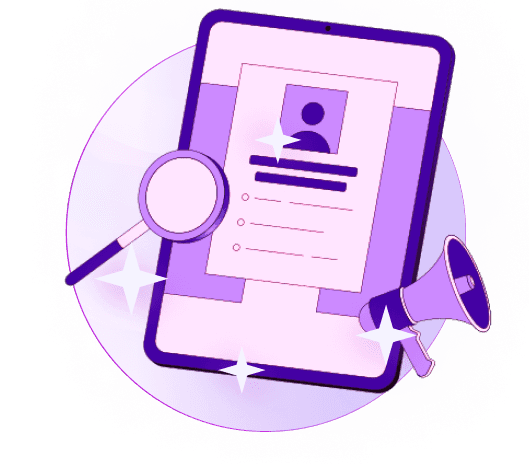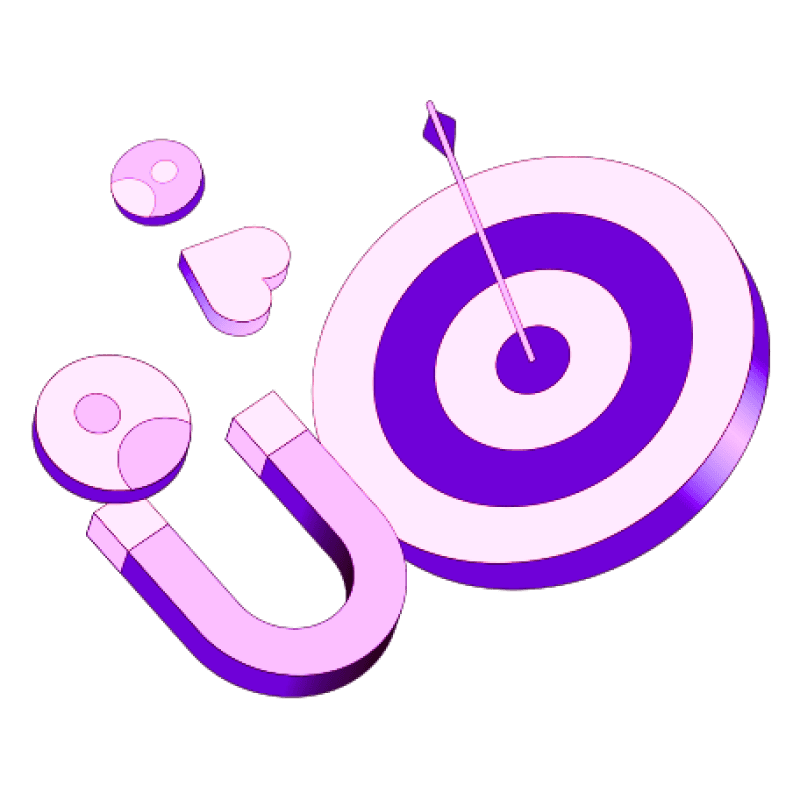Blogs
Articles

How to Implement Proposal Automation: A Step-by-Step Guide for Sales Teams
Did you know teams that use proposal automation software respond to 35% more RFPs annually? They submit an average of 202 bids compared to just 150 for non-users.
Proposal automation uses technology to optimize your proposal management process. It reduces manual intervention and boosts efficiency. This approach removes repetitive tasks, enhances proposal quality, and lines up smoothly with your sales cycle.
Moving away from manual processes might seem overwhelming at first. But the right proposal automation solution can cut your proposal creation time and help you win more business. This piece offers a practical, step-by-step approach to bring proposal automation into your sales team.
What is proposal automation and why it matters?
Proposal automation revolutionizes how sales teams create their proposals. It turns a labor-intensive process into a simplified, quick system. The technology automates the creation, management, and delivery of business proposals. Sales teams now use automated software to generate proposals faster, with better precision and consistency.
Let's look at a real example: an advanced-industries company cut its proposal creation time from three weeks to just two hours. This change led to happier customers and a 5% boost in revenue. YouGov's story is equally impressive - they saved 10 hours per employee each week after switching to proposal automation.
Key benefits for sales teams
Your bottom line will see these concrete advantages from proposal automation:
Accelerated turnaround times - Teams now create proposals in just 17 minutes. Order processing has dropped from 2-3 days to only 1-2 hours.
Improved accuracy and compliance - Built-in validation rules ensure proposal information stays current and accurate, which eliminates costly mistakes.
Boosted brand consistency - Marketing-approved templates with fixed design elements keep your client communications uniform.
Data-driven performance - Smart personalization adds client-specific data and customized value propositions automatically. This is a big deal as it means that win rates improve.
Scalability without added resources - Your team handles more proposals without needing extra staff.
Common challenges in manual proposal processes
Sales teams face several roadblocks when they don't use automation:
Manual proposal development eats up time and leads to mistakes. Sales reps waste hours writing proposals from scratch or copying old templates instead of selling.
Human error creeps in with manual input. Wrong pricing, outdated terms, or missing legal clauses hurt your credibility and create compliance risks.
The professional image suffers from inconsistent formatting, tone, and layout. These differences can confuse clients, especially when they're comparing multiple vendors.
Tracking proposal progress becomes a nightmare without a central system. Companies that grow find these manual methods don't scale well. They need more staff but still face problems, especially when dealing with multi-product quotes in global markets.
Setting Up the Foundation
Structured systems and clear processes are the foundations of successful proposal automation. Research shows that companies with well-laid-out proposal libraries can cut their proposal creation time by 63%.
Build a centralized content library
Your proposal automation strategy needs a centralized content library at its core. This digital hub stores pre-approved, reusable proposal materials that everyone on your team can access. Your team members can find answers through simple searches instead of digging through old emails or documents, thanks to a properly managed library.
The library needs strategic content selection because not every proposal answer belongs there. The implementation phase should avoid bulk uploads of old proposals that create unnecessary clutter.
Here's what you should do:
Review content every six months to ensure accuracy
Add relevant keyword tags to make retrieval easy
Keep your total tags under 50 to avoid oversegmentation
Delete outdated information that might hurt your chances of winning
Create reusable templates for different proposal types
Your templates should be versatile enough to adapt to client needs while staying consistent. These templates need to work with different industries and proposal types, yet include essential elements that remain the same across submissions.
The most effective templates include standardized sections such as company background, team overviews, project scope descriptions, and pricing breakdowns. Storing these as pre-approved content eliminates the need for repeated reviews. Note that templates should provide structure and allow customization rather than just changing a few words.
Define roles and responsibilities in your team
No "right" proposal team structure exists universally, but a "wrong" one definitely lacks sufficient coverage. The Proposal Manager plays a vital role by tracking requirements, allocating contributors, and managing submission timelines.
A RACI chart helps establish clear accountability by identifying who's responsible for each proposal element. Your team should include views from all relevant departments. You need estimators who work well with ambiguity and people who know the potential client. The team needs proper briefing through an Opportunity Brief document to understand the context, key dates, and target outcomes.
Automating the Proposal Workflow
A solid foundation lets you focus on making your workflow more efficient. Today's proposal automation tools pack powerful features that cut down manual work throughout the process.
Use AI to auto-fill common responses
AI-powered automation saves teams countless hours they would spend writing proposals. Your team can now focus on closing deals and stimulating growth. These systems analyze existing proposal content through natural language processing to create relevant material. On top of that, AI suggests values from previous proposals or extracts information from uploaded documents and emails to auto-fill request fields. You retain control while delivering personalized content for each client.
Set up approval workflows and reminders
Quick approval processes stop proposals from getting stuck in review. Power Automate helps you handle document approvals in SharePoint, Dynamics 365, and Salesforce. You can build approval workflows that send proposals to stakeholders based on set rules. The system notifies approvers through email, approval centers, or mobile apps, which removes the need for manual follow-ups. The system also sends automatic reminders if no one takes action within set timeframes.
Integrate with CRM and sales tools
Your sales process improves when you combine your proposal system smoothly with your CRM. Your CRM data automatically fills proposal templates, which keeps everything accurate and consistent. The deal moves forward in your sales pipeline as the proposal progresses when you link it to your CRM. Teams won't need to enter data twice, and they'll see all customer interactions in one place.
Track proposal status in real-time
Real-time tracking shows you how prospects engage with your proposal. This helps teams time their follow-ups better and forecast more accurately. You can see when clients open your proposal, which parts interest them most, and who's involved in the decision. Sales teams can reach out at the right moment and adjust their strategy based on what the client showed interest in.
Optimizing and Scaling Your System
Your proposal automation system needs proper maintenance to succeed in the long run. A well-implemented system with regular updates will give you better returns through better efficiency and more wins.
Clean and maintain your content library
Your content library needs regular checks to stay useful and organized. Most proposal content should be reviewed every six months, but fast-changing information needs more frequent updates. Let your subject experts check relevant tags and update them as changes happen. Keep your total tags under 50 to avoid confusion. Remove old content before adding new material that might hurt your chances of winning. You can set yearly content expiration dates or automatic alerts to keep your content fresh and accurate.
Use analytics to improve win rates
Evidence-based insights will boost your proposal success rates. Teams that use proposal analytics win 13% more often than others. Learn about engagement patterns - successful proposals get viewed 2.5 times before acceptance, while unsuccessful ones get 3.5 views. Don't wait too long if you see seven views - that's the average for lost deals. Watch how people engage with different sections. More time spent on pricing often shows serious interest or internal discussions. The best time to follow up: reach out after one day if nobody opens the proposal, or after two days if it's opened without any response.
Choose the best proposal automation software
You need a solution that fits your specific needs. Many options exist, but focus on platforms that blend naturally with your CRM systems and automatically pull customer data and deal stages. Look for AI features, customizable templates, resilient content management, immediate analytics, and tools that make shared work easier. GetAccept, PandaDoc, and Proposify are popular choices Proposify stands out with its detailed section-by-section analytics.
To get complete proposal automation that improves efficiency while keeping quality high, check out solutions like Persana.ai that combine powerful automation with accessible interfaces.
Balance automation with human input
Finding the right mix of technology and human expertise makes everything work better. Automate the routine stuff like company background and standard product descriptions, but keep human touch for complex, strategic parts. Without doubt, every proposal needs a thorough human review before submission to catch mistakes and ensure quality. Use automation to help your team work smarter not replace them by handling basic tasks so they can focus on creativity and building real connections. In today's automated world, meaningful human interaction gives you a strategic edge.
Conclusion
Sales teams can revolutionize their processes with proposal automation to boost efficiency. This piece explores how this technology turns time-consuming manual work into an optimized, error-free system. Proposal automation doesn't just save time it affects your bottom line through faster turnaround times, better accuracy, and consistent branding.
A strong foundation sets the stage for proposal automation that works. Building a centralized content library, versatile templates, and clear team roles are the foundations for success. Your team can then utilize powerful automation features like AI-powered content generation, approval workflows, and CRM integration.
Without doubt, proposal automation shows its true value when you keep optimizing the system. Regular content updates prevent information from getting stale. Analytics give vital insights about client engagement and help improve win rates. The right software solution should balance complete features with ease of use as the backbone of your proposal ecosystem.
Proposal automation lets your team focus on what matters most building relationships and delivering value instead of repetitive tasks. All the same, automation works best with human expertise. The best proposal strategies blend technological efficiency with a personal touch that creates authentic connections with prospects.
Your next step is to create a system that grows with your business needs. Sales teams will appreciate freedom from tedious manual work. Clients will value faster, personalized responses. Your business will see higher win rates and increased revenue. Proposal excellence starts with automation take that first step today.
Key Takeaways
Transform your sales efficiency with these essential insights on implementing proposal automation that can revolutionize your team's performance and win rates.
• Build a strong foundation first - Create centralized content libraries, reusable templates, and clear team roles before implementing automation tools.
• Leverage AI for speed and accuracy - Use AI-powered systems to auto-fill responses, reducing proposal creation time from weeks to just 17 minutes on average.
• Integrate with existing sales tools - Connect proposal automation with your CRM to eliminate duplicate data entry and create seamless workflow visibility.
• Track and optimize continuously - Use real-time analytics to monitor client engagement patterns and improve win rates by up to 13% through data-driven insights.
• Balance automation with human expertise - Automate repetitive tasks while preserving human input for strategic elements and relationship building to maintain authentic client connections.

Create Your Free Persana Account Today
Join 5000+ GTM leaders who are using Persana for their outbound needs.
How Persana increases your sales results
One of the most effective ways to ensure sales cycle consistency is by using AI-driven automation. A solution like Persana, and its AI SDR - Nia, helps you streamline significant parts of your sales process, including prospecting, outreach personalization, and follow-up.



